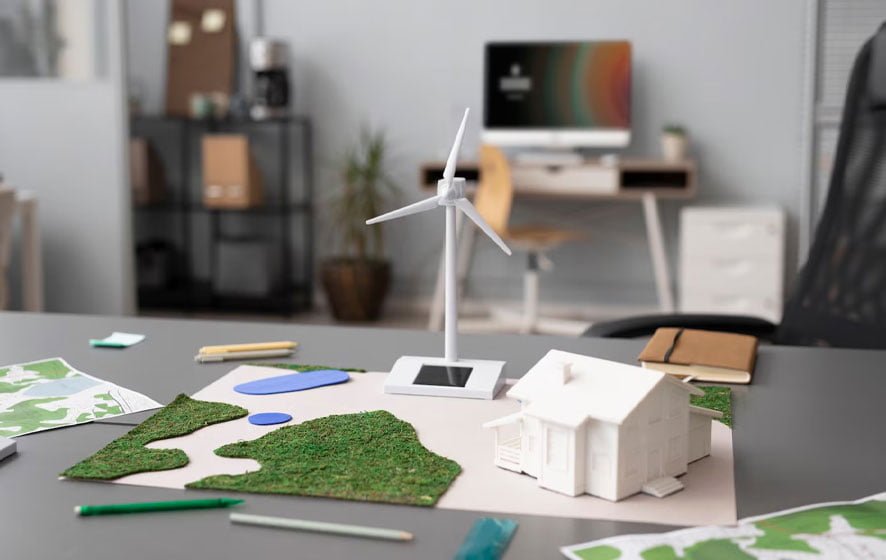You know what they say – home is where the heart is. But did you know it can also be where the planet is? Creating an eco-friendly home doesn’t have to mean sacrificing style or breaking the bank. Sustainable interior design can be downright beautiful, cost-effective, and even increase your home’s value. So let’s dive into the world of green living and explore how to design an environmentally-conscious space that’s as easy on the eyes as it is on Mother Nature.
Spoiler Alert: Going green at home is a total win-win.
You’ve got to admit, that’s a pretty compelling hook, right? Now that I’ve grabbed your attention, let me make my thesis clear: Designing an eco-friendly home is not only environmentally responsible but also aesthetically pleasing and cost-effective in the long run. By incorporating sustainable principles into your interior décor, you can create a space that’s healthy, beautiful, and easy on your wallet. It’s a triple threat that’s hard to beat!
Introduction
We all want to do our part for the planet, but the idea of “going green” can sometimes feel overwhelming and expensive. Luckily, when it comes to interior design, sustainability doesn’t have to mean sacrificing style or breaking the bank. Eco-friendly homes are often more beautiful, comfortable, and valuable than their conventional counterparts.
This article will explore the principles of sustainable interior design and provide practical tips for incorporating them into your home. From choosing eco-friendly materials to implementing energy-efficient systems, we’ll cover it all. So grab a reusable water bottle (because hydration is key, folks), and let’s dive into the world of gorgeous, responsible home design.
Principles of Sustainable Interior Décor
At its core, sustainable interior design is all about creating spaces that are environmentally friendly, resource-efficient, and healthy for occupants. It’s a holistic approach that considers the entire lifecycle of a space, from construction and material selection to operational energy use and eventual deconstruction or renovation.
Here are some key principles that guide green interior design:
- Energy efficiency: Reducing energy consumption through efficient lighting, insulation, and appliances.
- Water conservation: Implementing water-saving fixtures and systems to minimize water usage.
- Waste reduction: Minimizing waste during construction and operation, and incorporating recycled or repurposed materials.
- Eco-friendly materials: Choosing materials that are renewable, recyclable, or have a low environmental impact.
- Natural light and ventilation: Maximizing the use of natural light and improving indoor air quality through proper ventilation.
- Sustainable furniture and textiles: Selecting furniture and textiles made from sustainable or recycled materials, and designed for durability and ease of repair or recycling.
These principles can be applied in every room of your home, from the kitchen to the bedroom. For example, you could install energy-efficient appliances in the kitchen, use low-flow showerheads in the bathroom, and incorporate natural materials like bamboo or cork in the living room.
The 4 Pillars of Sustainable Design
When it comes to sustainable design, four key pillars guide the process: people, planet, profit, and process. Let’s break them down:
People: This pillar focuses on creating healthy, comfortable, and productive environments for the occupants. It considers factors like indoor air quality, natural lighting, and ergonomics.
For example, incorporating plants into your interior design not only adds a beautiful natural element, but also helps purify the air and boost mood and productivity.
Planet: This pillar is all about minimizing the environmental impact of the design. It involves using sustainable materials, reducing energy and water consumption, and considering the entire lifecycle of the space.
By choosing locally-sourced, recycled, or recyclable materials, you can significantly reduce the carbon footprint of your home’s construction or renovation.
Profit: While eco-friendly design may have higher upfront costs, this pillar focuses on long-term cost savings and financial benefits. Energy-efficient homes, for example, can save you money on utility bills, and sustainable design can increase a property’s value.
Investing in energy-efficient appliances and systems may cost more initially, but they’ll save you money on your energy bills in the long run – it’s a win-win for your wallet and the planet!
Process: This pillar emphasizes continuous improvement and innovation in sustainable design practices. It’s about staying up-to-date with new technologies and materials and constantly refining and optimizing the design process.
As new eco-friendly products and technologies emerge, savvy designers and homeowners can incorporate them into their spaces, further reducing their environmental impact.
By considering all four pillars, sustainable design creates spaces that are beautiful, healthy, cost-effective, and environmentally responsible.
Designing an Eco-Friendly Home
Now that you understand the principles and pillars of sustainable design, let’s dive into some practical tips for creating an eco-friendly home:
Choosing eco-friendly materials: When it comes to construction or renovation, opt for materials that are renewable, recycled, or have a low environmental impact. Some great options include bamboo, cork, reclaimed wood, and recycled glass or metal.
Not only are these materials gorgeous and durable, but they also have a much lower carbon footprint than conventional options like virgin wood or plastic.
Incorporating natural elements: Bring the outdoors in by incorporating natural elements like plants, water features, and natural light. Biophilic design has been shown to improve mood, productivity, and overall well-being.
Imagine waking up to a living wall of lush greenery or enjoying your morning coffee in a sunroom filled with natural light – talk about starting the day off right!
Using energy-efficient appliances and lighting: Look for appliances and lighting fixtures with the Energy Star label, which indicates they meet strict energy efficiency guidelines. LED bulbs and smart home technologies can also help reduce energy consumption.
Not only will energy-efficient appliances and lighting save you money on your utility bills, but they’ll also reduce your carbon footprint – it’s a win-win!
Implementing water-saving fixtures: Low-flow showerheads, dual-flush toilets, and efficient faucet aerators can significantly reduce your water usage without sacrificing performance.
With all the water you’ll save, you can finally install that luxurious rain shower you’ve been dreaming of – guilt-free!
Incorporating sustainable furniture and textiles: Look for furniture and textiles made from sustainable materials like bamboo, organic cotton, or recycled plastics. Opt for pieces that are built to last and can be easily repaired or repurposed.
Not only are these items beautiful and durable, but you can feel good knowing they’re not contributing to environmental degradation or unethical labor practices.
By incorporating these elements into your home design, you’ll create a space that’s not only gorgeous and comfortable but also environmentally responsible.
How Interior Designers Can Be Environmentally Friendly
Interior designers play a important role in promoting sustainable design practices and educating clients on eco-friendly options. Here are some strategies designers can use to reduce their environmental impact:
- Using eco-friendly materials and products: Specify materials and products that are sustainable, non-toxic, and have a low environmental impact. This includes everything from paint and flooring to furniture and textiles.
- Implementing sustainable design practices: Incorporate principles like energy efficiency, water conservation, and waste reduction into every project. Use design software and tools that facilitate sustainable decision-making.
- Educating clients: Many clients may not be aware of the benefits and options for sustainable design. It’s the designer’s job to educate them and provide eco-friendly alternatives that meet their aesthetic and functional needs.
- Collaborating with other professionals: Work closely with architects, engineers, and contractors to ensure that sustainable design principles are carried through from the initial concept to the final construction or renovation.
By taking a leadership role in sustainable design, interior designers can help create beautiful, healthy, and environmentally responsible spaces that inspire clients and colleagues alike.
Conclusion
Creating an eco-friendly home is not only good for the planet, but it’s also good for your wallet and your well-being. By incorporating sustainable design principles like energy efficiency, water conservation, and the use of eco-friendly materials, you can create a space that’s beautiful, comfortable, and responsible.
But sustainable design isn’t just about checking boxes – it’s about creating spaces that nourish the mind, body, and soul. It’s about bringing the outdoors in and surrounding yourself with natural elements that promote health and happiness. It’s about making choices that not only look good but also feel good, for you and for the planet.
So what are you waiting for? Start small by swapping out your light bulbs or adding some houseplants. Or go big and take on a full-scale renovation or new construction




No Comment! Be the first one.